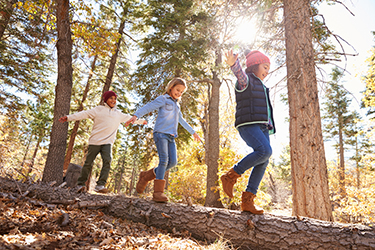Climate change is having increasingly detrimental effects on children’s physical and mental health. But teaching about climate and health risks doesn’t have to be all doom and gloom, especially when climate change is taught in a straightforward way that appeals to youth, speakers said Monday at the APHA 2022 session “Climate Justice and Children’s Health: Inspiring Youth to Advocate for Climate Action,” organized by the APHA Maternal and Child Health and Environmental sections.
Nsedu Witherspoon, with the Children’s Environmental Health Network, spoke on the risks that climate change poses to children. She said the Children’s Environmental Health Network is the only national organization with a focus specifically on protecting children’s environmental health.
 “We often say a child’s environment is a ‘chemical toxicant soup,’” Witherspoon said, citing “forever chemicals” such as perfluoroalkyl and polyfluoroalkyl substances (PFAS) that can be found in many unexpected places, from synthetic fabrics in children’s clothing to the toys they play with.
“We often say a child’s environment is a ‘chemical toxicant soup,’” Witherspoon said, citing “forever chemicals” such as perfluoroalkyl and polyfluoroalkyl substances (PFAS) that can be found in many unexpected places, from synthetic fabrics in children’s clothing to the toys they play with.
She said rising heat indices around the world limit the time children can spend playing outdoors, increase the risk of heat exhaustion, lead to greater food insecurity and increase exposure to disease carrying insects such as ticks and mosquitos.
According to Witherspoon, the COVID-19 pandemic emphasized that child care in the U.S. is fragmented, inequitable, often financially inaccessible to families and underfunded. The U.S. spends less than 0.5 % of its GDP on child care when compared to other developed nations.
Leyla McCurdy, chair of the APHA Environment Section Children’s Environmental Health Committee, worked with Megan Latshaw of Johns Hopkins University to develop a climate and health lesson plan for high school students to engage and empower them.
McCurdy said climate change is not taught in most schools, though the state of New Jersey recently implemented a policy that makes climate education mandatory for K-12 students. She said the lesson plan the two created has been in the works since 2019 and is now beginning to take off.
Tiffany Canate, a member of the APHA Environment Section and early-career professional who recently graduated from Boston University School of Public Health, began using the lesson plan at a summer camp and is now using it in a high school.
Canate said one of the first things she learned was that information on climate needed to be presented in a manner the students could understand.
“They discovered that thinking about it as cause and effect was more palatable language to use, so that’s what we shifted towards, rather than ‘environmental conditions’ and ‘environmental hazards’ because it was more straightforward and got to the root of what we were talking about,” she said.
Canate developed a relay race game based on the climate lessons, which she played with her summer camp youth. She said they really enjoyed playing the game, so she played it with her group of high school seniors at Suncoast Community High School in Riviera Beach, Florida.
“[The high school students] loved the game, too,” Canate said. “There’s a lot of anxiety among youth about climate change, so incorporating a physically active game into the lesson was a kind of release for them; it took some of the pressure off.”
The students that Canate worked with were also able to use what they had learned to give presentations to their peers.
Natasha Matta and Rhea Goswami, with the Environmental Justice Coalition, emphasized the importance of mobilizing their generation, Gen Z, to speak up about environmental injustice, systemic racism and health disparities.
“Youth voices are very important, and there’s a multitude of reasons as to why youth should be given the space to voice their opinions,” Matta said. “To start off, youth are the future policymakers, climate scientists, change-makers and space disruptors. It’s important to give youth a seat at the table because it allows them to grow in confidence, as well as share their opinions, make mistakes and be able to receive mentorship and experience within this space.”
Goswami said youth often have more diverse skills than older individuals and they know how to reach their peers, especially on social media. She said the Environmental Justice Coalition does most of its outreach on Instagram and TikTok because those are the social media platforms Gen Z is using. They also have a podcast, A Cup of EJ (Environmental Justice).
“Involving youth in the conversation about climate change issues gives other youth the opportunity to see how youth can be empowered and give a slight inkling of interest in learning more about the climate change movement,” Goswami said. “Our job, especially for this generation and future generations, is to get more and more people educated about climate change, so it’s important that as many youth as possible get the notion that climate change exists, there is a consensus that it exists and we are doing things to solve it.”
By monkeybusinessimages, iStockphoto.